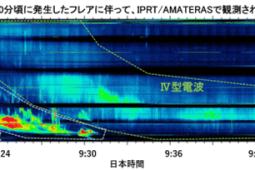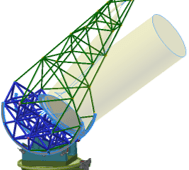PPARCセミナー(2024/07/08)

PPARCセミナー(2024/07/08)
(1)
[Name] Haruto Yamanaka
[Title]
[Abstract]
Auroral kilometric radiation (AKR) is known to be transient emissions generated by rapidly accelerated electrons together with sudden auroral activation in the polar magnetosphere. In contrast, the characteristics and relationship with the auroral acceleration of rather continuous AKR emissions are not well understood. They examine the emission using long-term data and report that the continuous AKR emission frequency changes with universal time (UT) as the Earth rotates, indicating that the Earth is a spin-modulated variable radio source. The observed UT variation of AKR frequency means that the acceleration altitude changes periodically with planetary rotation. The observations indicate that the diurnal wobble of the tilted geomagnetic field in the solar wind flow alters the magnetosphere-ionosphere (M-I) coupling state in the polar magnetosphere, giving rise to periodic variation of auroral particle acceleration altitude. These observations of planetary radio wave properties provide insight into the physics of planetary particle acceleration.
(2)
[Name] Masamichi Waga
[Title]
Goldstone Apple Valley Radio Telescope Monitoring Flux Density of Jupiter’s Synchrotron Radiation during the Juno Mission
(T. Velusamy 2020)
Goldstone Apple Valley Radio Telescope (GAVRT) is a science education partnership among NASA, the Jet Propulsion Laboratory (JPL), and the Lewis Center for Educational Research (LCER), offering unique opportunities for K-12 students and their teachers. As part of a long-term Jupiter synchrotron radiation (JSR) flux density monitoring program, LCER has been carrying out Jupiter observations with some student participation. In this paper they present the results of processed data sets observed between 2015 March 6 and 2018 April 6. The data are divided into 5 epochs, grouped by time and by Jupiter’s ephemeris parameters as observed from Earth. They derive JSR beaming curves at different epochs and Earth declinations. They present a comparison of the observed beaming curves with those derived from most recent models for the radiation belts. Their results show an increasing trend of the JSR flux density which seem consistent with the models for the magnetospheric solar wind interactions.





